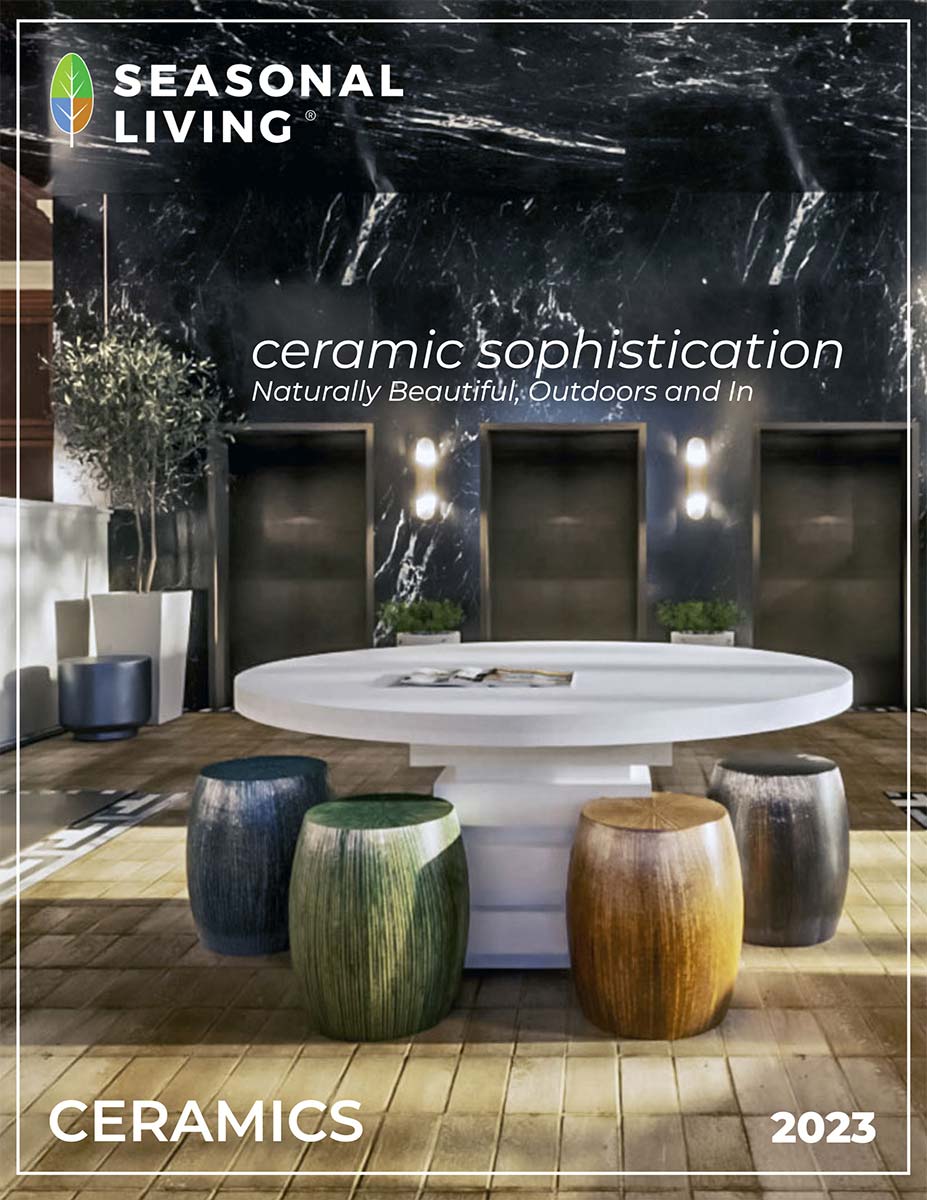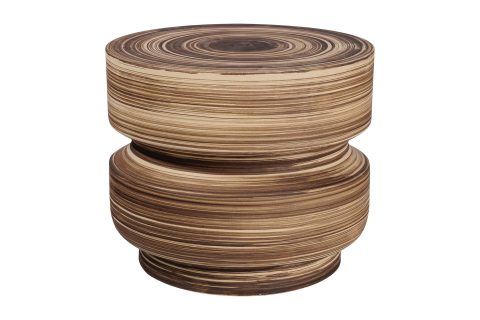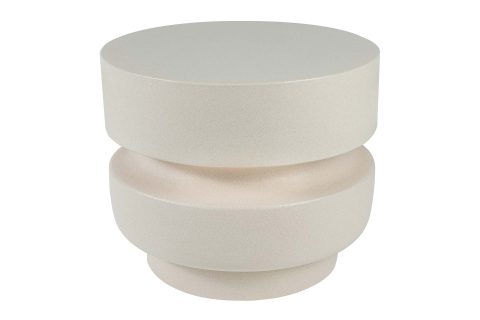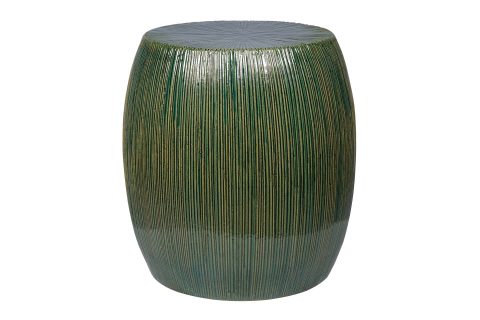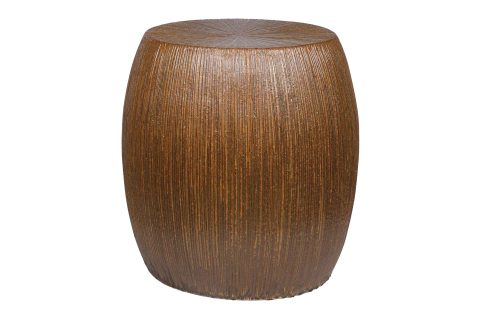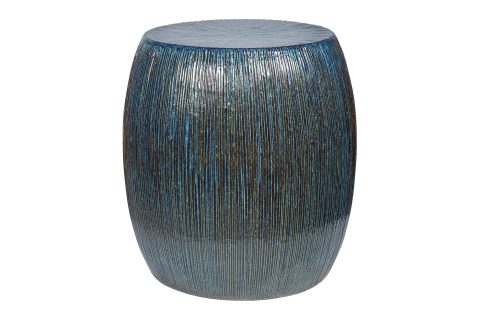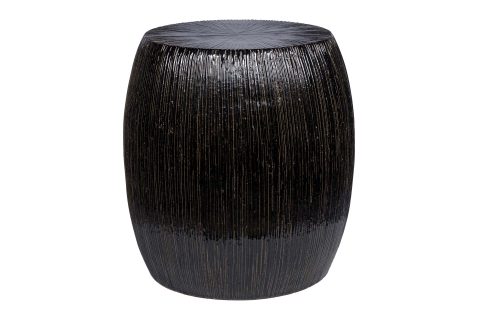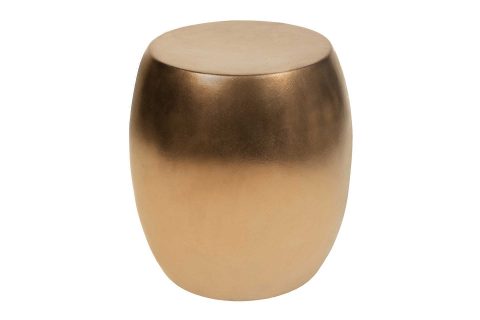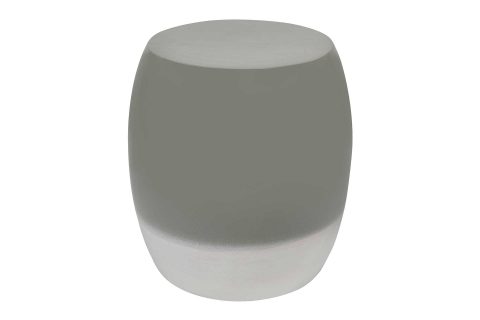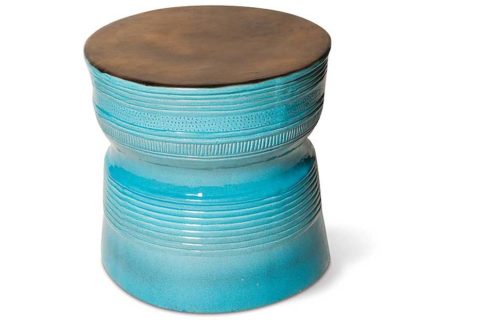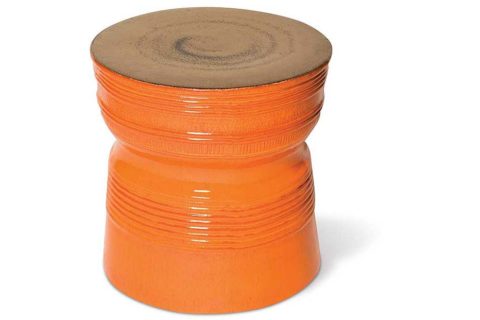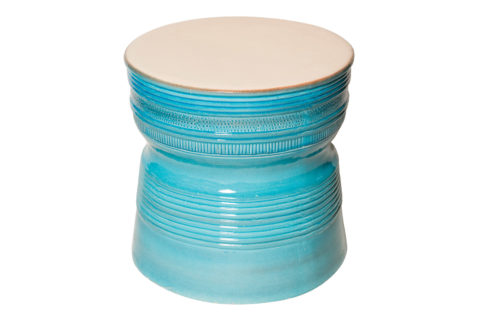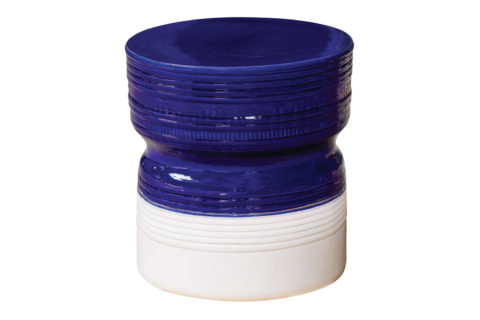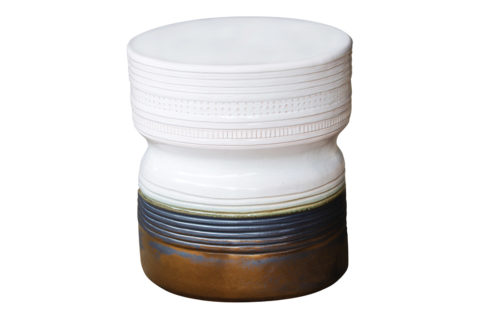Ceramic: Directly from the Earth
Our ceramic products are made from fine-grained clays, shaped by artisans, and hand-glazed with closely guarded recipes.
Raw Elements
Clay is dug directly from the earth and is comprised of soil and mineral particles with diameters less than 0.005 millimeter. All types of clays contain one or more clay minerals, together with varying amounts of organic material and grains that have been worn from rock, especially quartz. These impurities give clays their characteristic colors. For example, red clay contains higher levels of iron and black clays contain more manganese than other clays.
Clay has plastic properties when wet, making it workable. Higher levels of kaolin make clays less plastic but also less porous. In ceramics, clays fall into three categories:
- Earthenware: Also known as pottery or terra cotta, earthenware clays have the lowest firing temperatures but are porous and less durable.
- Stoneware: These clays fire at a medium temperature and are exceptionally durable and non-porous. Stoneware clays are often buff, brown, or gray due to low levels of impurities.
- Porcelain: These are fine-grained white clays with high levels of kaolin. They fire at the highest temperatures—over 2,300 degrees F (1,260 degrees C). The results are ceramic products with low porosity and high resistance to chips and breaks.
Glazes
A glaze is a glass that has been modified to melt onto a clay. Glazes consist of three components plus colorants: silica (the glass), flux, and clay or alumina. Composed of silicon dioxide, common types of glasses are sand, quartz, and flint. Silica (industrial sand) is the primary ingredient in glass, raw clay, and ceramic glazes.
For use as ceramic glazes, chemicals are added to silica to lower its melting point. Known as fluxes, these naturally occurring chemicals facilitate the transformation of silica into glass. The most commonly used fluxes in ceramic glazes come from limestone as calcium oxides. Low-fire glazes contain higher percentages of fluxes with silica; high-fire glazes—such as those used for porcelain—require lower percentages of flux in relation to silica.
Alumina is the third ingredient required in a ceramic glaze. Glazes are applied to clay bodies that have been fired once, known as bisque ware. The bisque ware undergoes additional shrinkage after the glaze is applied and the piece is fired again. The glaze itself must shrink to fit the bisque ware. An amount of clay that contains aluminum oxide is added to the glaze to accommodate the shrinkage. Without alumina, the glaze would slide off the surface of the bisque ware.
Glaze colorants come from oxides and carbonate materials. Common examples include iron oxide, copper oxide, chrome oxide, and cobalt. The resulting color depends on other elements present in the glaze. For example, iron oxide is often used to produce reds and browns. However, in the presence of potassium it can become light blue. In the presence of barium it can become yellow-green. Combined with calcium, it can become pale yellow or amber. Opacifiers are elements, such as tin oxide or zirconium silicate, often used with colorants to increase the opacity of a color.
These factors are one reason why our artisans have closely guarded their glaze recipes for generations. Closely guarded glaze formulas use natural ingredients and no heavy metals, yielding saturated colors in both matte and gloss finishes. Matte glazes are soft, with a slight texture. Our artisans can produce—and predictably repeat—exquisite ceramic piece that retain their glazes for decades.
Manufacturing Process
Shaping
Many Seasonal Living ceramic furnishings—especially large-scale pieces—begin their lives from a handmade plaster of Paris mold. Other pieces are completely thrown and shaped by hand. Either way, clay is dug and mixed for the correct workability. Clay is pressed into a mold and air-cured into fragile, unfired pottery called greenware. Air-drying is critical for greenware. The piece must be completely and evenly dried before being fired into bisque ware.
Firing
The next step is bisque firing, which vitrifies the greenware into glass. During bisque firing, kiln temperatures are slowly raised to drive any remaining atmospheric moisture from the clay. If temperatures are raised too high too quickly, steam is created in the clay and pieces can burst. Clay finally becomes ceramic while remaining porous enough to accept glaze at approximately 1730 degrees F (943 C). After reaching this temperature the kiln is turned off and allowed to cool slowly to avoid breaking pieces from temperature stress. Clay can expand or contract by up to 10% during the firing process. This is why Seasonal Living product dimensions are approximate.
Glazing
Next, artisans hand-apply glazes and fire the pieces a second time. Gas-fired kilns ensure a high, consistent heat that brings glazes to jewel-like color saturation. However, varying clay mineral compositions, the number of times a product is fired, how heavily the glaze is hand-applied by different individuals, levels of humidity, location in the kiln, and glaze reactions to different clay mineral compositions affect the final result. Burn marks, pitting, green/blue/black flecks, unglazed spots and minor cracks can appear on, in, and below the glaze. There will always be small variations in color, glaze, and surfaces. These are normal, adding character and guaranteeing the uniqueness of each piece.
Sustainability
Ceramic glazes are made from all natural materials with no heavy metals
Ceramic pieces return to the earth at the end of their lifecycle
Notes
Protect from freezing conditions
Not for culinary use
Countries of Origin
Thailand
Italy
